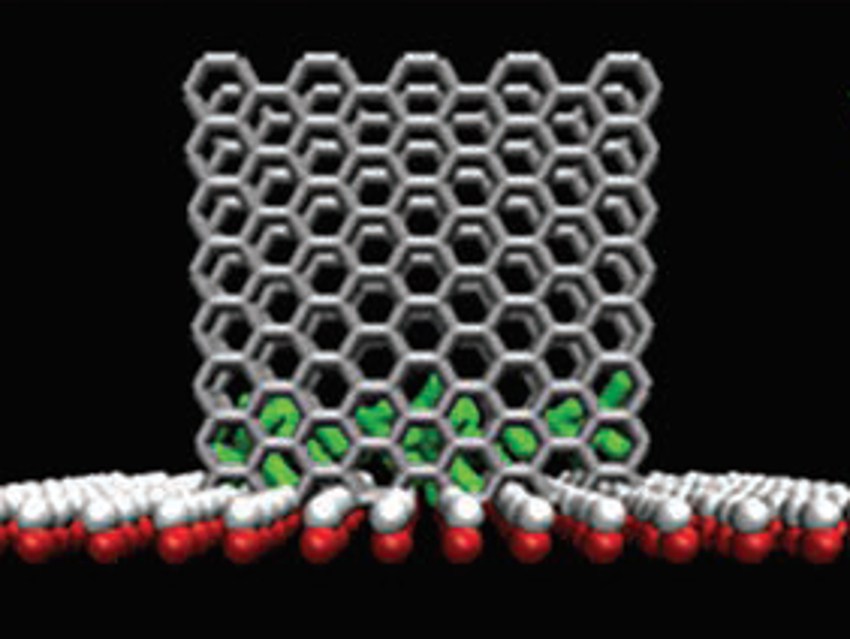Antimicrobial peptides (AMPs) can kill a broad spectrum of bacteria by interfering with the bacteria’s cell membranes. This mode of action avoids the resistances that can prevent traditional antibiotics from working. However, many AMPs have issues which prevent their clinical use, e.g., poor membrane penetration efficiency.
Bing Yuan, Kai Yang, Soochow University, Suzhou, China, Yuqiang Ma, Soochow University and Nanjing University, China, and colleagues have developed hybrid complexes of the AMP melittin and graphene oxide (GO) nanosheets. The team covalently connected melittin with different types of layered GO sheets at a weight ratio of GO:melittin = 1:8. They used either GO nanodots (GO NDs, size of 39 ± 10 nm, 4–5 stacked sheets) or GO nanocolloids (GO NCs, size of 90 ± 10 nm, 2–3 stacked sheets)
The team tested the hybrid materials’ antibacterial activity using Escherichia coli and Staphylococcus aureus. They found that both the GO ND-based hybrid and the GO NC-based hybrid have higher antibacterial activities than pure melittin, pure GO NDs, pure GO NCs, or selected widely used antibiotics. The GO nanodot-based material shows a twentyfold enhancement of the antimicrobial ability compared with that of the pure melittin.
The researchers studied the insertion of the hybrid materials into cell membranes using computer simulations. They found that when melittin is adsorbed at the bottom edge of two parallel nanosheets, the complex rapidly penetrates the lipid bilayer of the membrane (pictured below, melittin in green). This forms a pore across the membrane, which causes the bacterium to leak its contents and die. This process is much slower for pure melittin.

- Designing Melittin-Graphene Hybrid Complexes for Enhanced Antibacterial Activity,
Xuemei Lu, Jiaojiao Liu, Lu Gou, Jingliang Li, Bing Yuan, Kai Yang, Yuqiang Ma,
Adv. Healthcare Mater. 2019.
https://doi.org/10.1002/adhm.201801521




